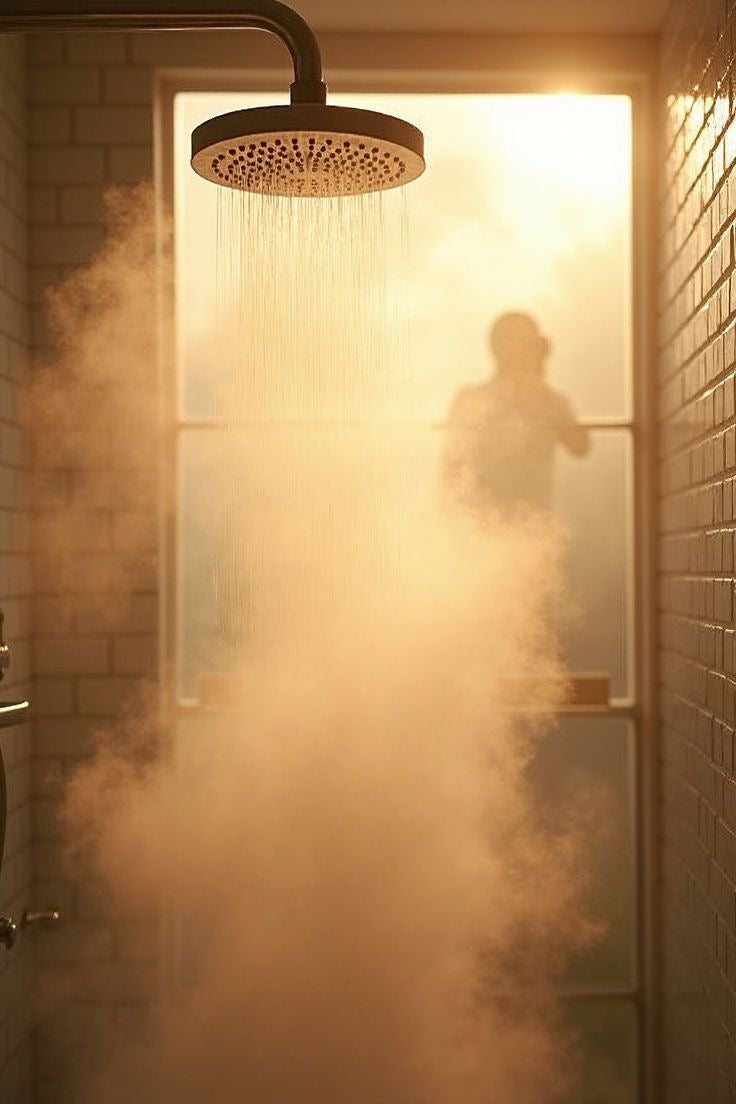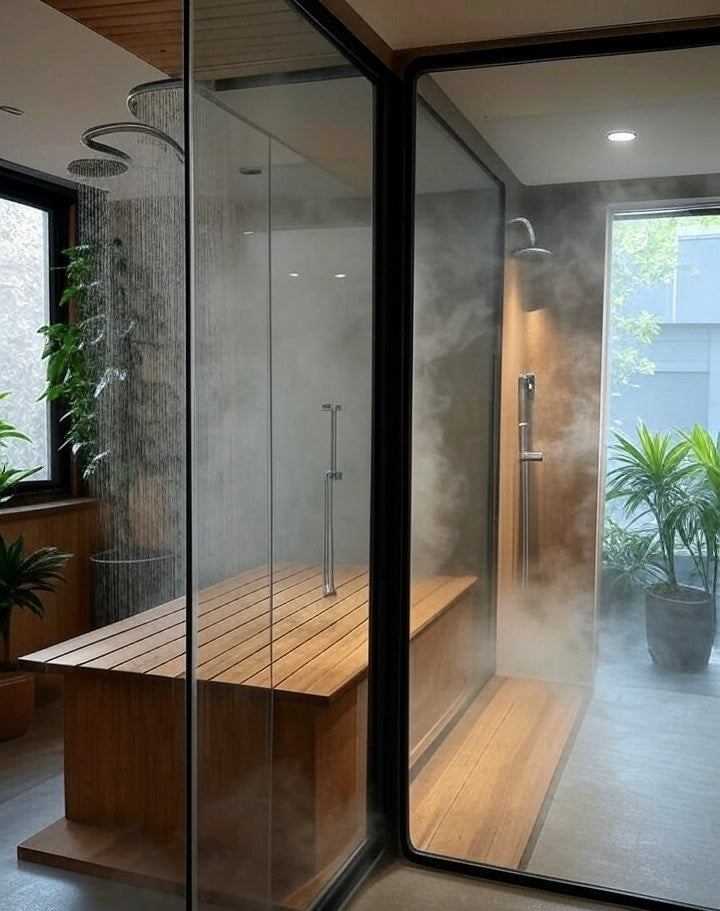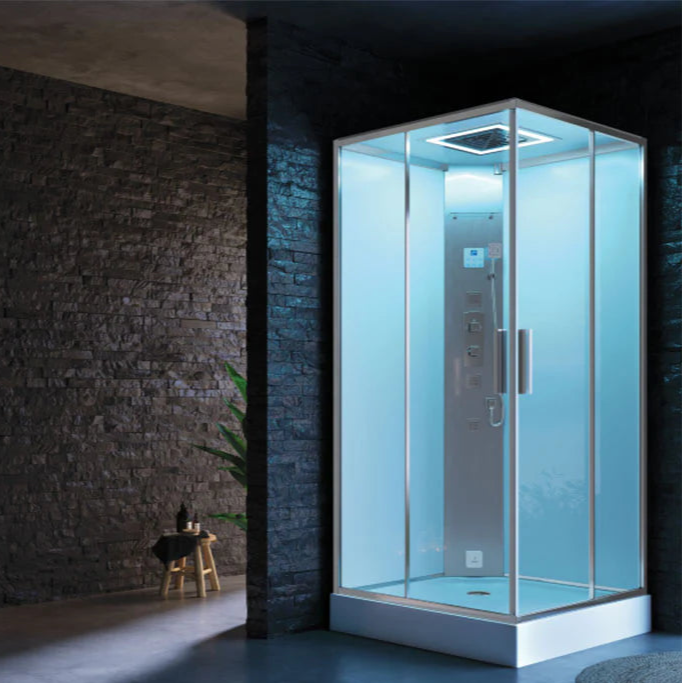Stuck choosing between Infrared Sauna and Near Infrared Sauna? Whether you're eyeing a Home Sauna, Garden Sauna, or Outdoor Sauna, here’s the short answer: it depends on your health goals. From detox to skin glow, each type has perks—so keep reading to discover your perfect heat therapy match!

Understanding Infrared Saunas: The Basics
What is Infrared Light?
Infrared light is a type of invisible light just beyond the red end of the visible spectrum. It produces heat when absorbed by the body, making it ideal for therapeutic use in saunas.
Near Infrared (NIR)
NIR has the shortest wavelength and penetrates the skin's surface. It's ideal for wound healing, collagen production, and skin rejuvenation. It’s also the most targeted type of infrared therapy.
Mid Infrared (MIR)
MIR sits in the middle of the spectrum and penetrates deeper into tissues. It helps with circulation and muscle recovery. It’s often paired with NIR or FIR for a balanced effect.
Far Infrared (FIR)
FIR has the longest wavelength, penetrating deep into the body. It’s excellent for detoxification, cardiovascular benefits, and full-body relaxation.
How Do Infrared Saunas Work?
Infrared saunas use light waves to heat the body directly, rather than warming the surrounding air like traditional saunas.
Direct Heating vs. Air Heating (Traditional Saunas)
Traditional saunas heat the air, which then heats your body. Infrared saunas use light to heat you directly, which feels gentler but can be equally effective.
Wavelengths and Penetration Depth
NIR reaches the surface, MIR works on soft tissue, and FIR goes deepest, targeting organs and deep muscles.
Near Infrared Sauna vs. Far Infrared Sauna: A Detailed Comparison
Key Differences
Wavelengths and Penetration Depth
NIR penetrates the skin lightly for targeted therapy. FIR goes deep, impacting core temperature and organ systems.
Operating Temperatures
NIR saunas often run at lower temperatures. FIR saunas typically heat up to 60°C, offering a more intense full-body experience.
Heating Elements (e.g., Ceramic, Carbon)
NIR saunas use LED panels or incandescent bulbs. FIR saunas generally use carbon or ceramic panels for broad, even heating.
Space Requirements and Portability
NIR saunas can be compact and portable. FIR units are usually larger, designed for full-room use.
Cost Considerations
NIR units can be more affordable due to their simplicity. FIR saunas may cost more but provide a spa-like, immersive session.
EMF Levels (Electromagnetic Frequencies)
Modern FIR saunas offer low EMF options. NIR saunas, especially bulb-based ones, may have slightly higher EMF unless shielded.
Specific Benefits of Near Infrared Saunas

Skin Health and Rejuvenation (Collagen Production, Wound Healing, Anti-Aging)
NIR supports collagen synthesis and reduces fine lines. It also enhances skin tone and promotes faster healing.
Cellular Health and Energy Production
NIR stimulates mitochondria, boosting ATP energy production. This can enhance cellular repair and vitality.
Targeted Surface-Level Concerns
NIR works well on acne, scars, and inflammation on or near the skin.
Specific Benefits of Far Infrared Saunas

Deep Detoxification (Heavy Metals, Toxins)
FIR helps eliminate toxins through sweat. This includes heavy metals, plastics, and other environmental pollutants.
Muscle Recovery and Pain Relief (Chronic Pain, Arthritis, Sore Muscles)
FIR eases muscle tension and soothes joint discomfort. It’s beneficial for athletes and people with chronic pain.
Cardiovascular Health (Blood Pressure, Circulation, Heart Function)
FIR sessions can improve blood flow and lower blood pressure over time. They mimic the effects of mild cardio exercise.
Relaxation and Stress Reduction
FIR saunas encourage deep relaxation and reduce cortisol levels, helping you unwind.
Weight Loss Support (Metabolism Boost)
By raising core temperature, FIR saunas can slightly increase calorie burn, supporting a healthy metabolism.
Choosing the Right Infrared Sauna for Your Needs
Consider Your Health Goals
Skin and Surface-Level vs. Deep Tissue and Detoxification
Go for NIR if you want glowing skin or spot treatments. Choose FIR for full-body detox and deep tissue recovery.
Chronic Pain Management
FIR is better for chronic conditions like arthritis. NIR may help with localised discomfort.
General Wellness and Relaxation
If your goal is to relax and improve circulation, FIR offers a spa-like experience. NIR suits those wanting a quick, targeted therapy.
The Rise of Full Spectrum Infrared Saunas
Combining NIR, MIR, and FIR Benefits
Full spectrum saunas offer all three wavelengths. You get surface and deep tissue benefits in one session.
Comprehensive Therapeutic Effects
From detox to skin health, full spectrum options aim to deliver a complete wellness experience.
Important Considerations Before Buying or Using
Consult a Healthcare Professional
Always speak to your GP if you have medical conditions, especially heart-related or chronic illness.
Safety Precautions (Hydration, Session Length)
Stay hydrated before and after. Start with short sessions (10–15 minutes) and build up gradually.
Low EMF Options
If EMFs are a concern, look for low-EMF certified saunas. Many newer models prioritise this.
Conclusion
Whether you’re after glowing skin or deep detox, both NIR and FIR saunas offer unique health perks. For skin and energy, try near infrared. For pain relief and full-body recovery, go far infrared—or get the best of both with a full spectrum model.
Takeaways
-
Near Infrared Sauna: Best for skin, cellular energy, and surface-level healing
-
Far Infrared Sauna: Ideal for detox, pain relief, and cardiovascular health
-
Full Spectrum Sauna: Combines all benefits in one unit
-
Choose based on your goals, space, and budget
-
Always stay hydrated and follow usage guidelines






